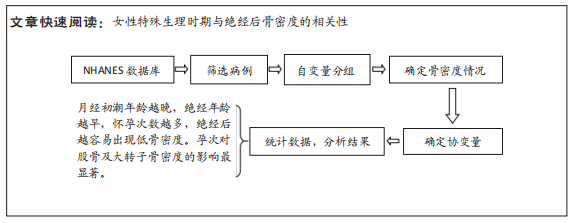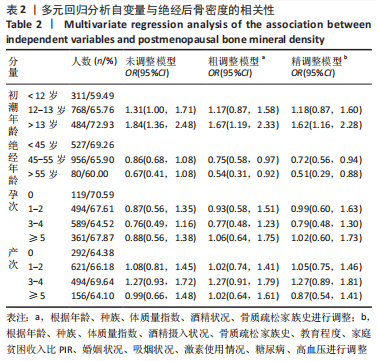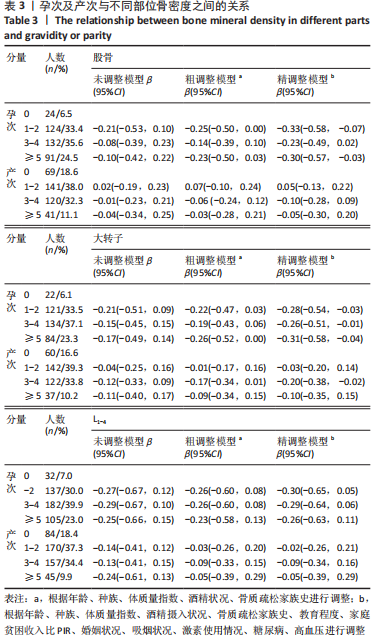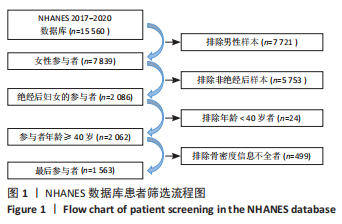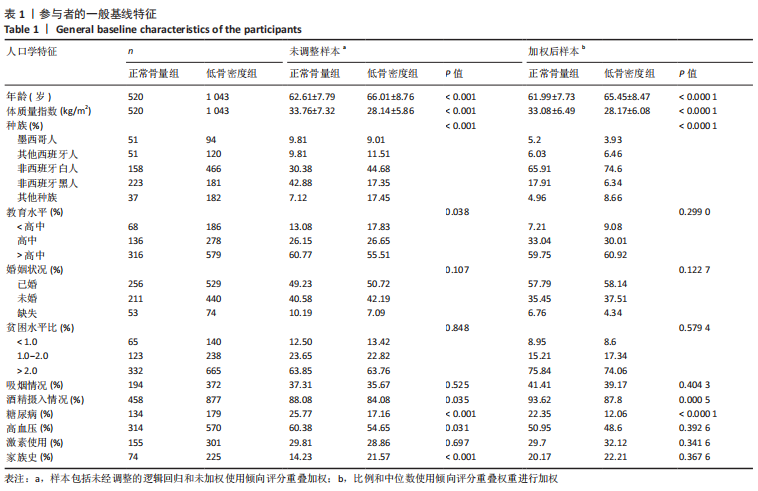[1] SOININEN S, SIDOROFF V, LINDI V, et al. Body fat mass, lean body mass and associated biomarkers as determinants of bone mineral density in children 6-8years of age - The Physical Activity and Nutrition in Children (PANIC) study. Bone. 2018;108: 106-114.
[2] MAïMOUN L, RENARD E, HUMBERT L, et al. Modification of bone mineral density, bone geometry and volumetric BMD in young women with obesity. Bone. 2021; 150:116005.
[3] LOOKER AC, SARAFRAZI ISFAHANI N, FAN B, et al. Trabecular bone scores and lumbar spine bone mineral density of US adults: comparison of relationships with demographic and body size variables. Osteoporos Int. 2016;27(8):2467-2475.
[4] KANIS JA, COOPER C, RIZZOLI R, et al. European guidance for the diagnosis and management of osteoporosis in postmenopausal women. Osteoporos Int. 2019;30(1):3-44.
[5] LOOKER AC, SARAFRAZI ISFAHANI N, FAN B, et al. Trends in osteoporosis and low bone mass in older US adults, 2005-2006 through 2013-2014. Osteoporos Int. 2017;28(6):1979-1988.
[6] WRIGHT NC, LOOKER AC, SAAG KG, et al. The recent prevalence of osteoporosis and low bone mass in the United States based on bone mineral density at the femoral neck or lumbar spine. J Bone Miner Res. 2014;29(11):2520-2526.
[7] MADIMENOS FC, SNODGRASS JJ, LIEBERT MA, et al. Reproductive effects on skeletal health in Shuar women of Amazonian Ecuador: a life history perspective.Am J Hum Biol. 2012;24(6):841-852.
[8] KANIS JA, MCCLOSKEY EV, JOHANSSON H, et al. A reference standard for the description of osteoporosis. Bone. 2008;42(3):467-475.
[9] COGSWELL ME, LOOKER AC, PFEIFFER CM, et al. Assessment of iron deficiency in US preschool children and nonpregnant females of childbearing age: National Health and Nutrition Examination Survey 2003-2006. Am J Clin Nutr. 2009;89(5):1334-1342.
[10] WAHNER HW, LOOKER A, DUNN L, et al. Quality control of bone densitometry in a national health survey (NHANES III) using three mobile examination centers.J Bone Miner Res. 1994;9(6):951-960.
[11] PEKER N, TOSUN Ö. Is grand multiparity a risk factor for the development of postmenopausal osteoporosis? Clin Interv Aging.2018;13:505-508.
[12] XUE S, ZHANG Y, QIAO W, et al. An Updated Reference for Calculating Bone Mineral Density T-Scores. J Clin Endocrinol Metab. 2021;106(7):e2613-e2621.
[13] SEO E, LEE Y, KIM HC. Association Between Parity and Low Bone Density Among Postmenopausal Korean Women. J Prev Med Public Health. 2021;54(4):284-292.
[14] YAN G, HUANG Y, CAO H, et al. Association of breastfeeding and postmenopausal osteoporosis in Chinese women: a community-based retrospective study. BMC Womens Health. 2019;19(1):110.
[15] SàNCHEZ-RIERA L, CARNAHAN E, VOS T, et al. The global burden attributable to low bone mineral density. Ann Rheum Dis. 2014;73(9):1635-1645.
[16] 张智海.中国人骨质疏松症诊断标准专家共识摘要(第三稿·2014版)[C].第十五届国际骨质疏松研讨会暨第十三届国际骨矿研究学术会议,中国北京, F, 2015.
[17] KURABAYASHI T, NAGAI K, MORIKAWA K, et al. Prevalence of osteoporosis and osteopenia assessed by densitometry in Japanese puerperal women. J Obstet Gynaecol Res. 2021;47(4):1388-1396.
[18] HO SC, CHEN YM, WOO JL. Educational level and osteoporosis risk in postmenopausal Chinese women. Am J Epidemiol. 2005;161(7):680-690.
[19] CLARKE BL, KHOSLA S. Female reproductive system and bone. Arch Biochem Biophys. 2010;503(1):118-128.
[20] HE Y, HUANG J, JIANG G, et al. Menarche age exceed 17 years and menopausal age smaller than 48 years may affect prevalence of osteoporosis for Chinese women. Arch Osteoporos. 2021;16(1):123.
[21] KUSEC V, VIRDI AS, PRINCE R, et al. Localization of estrogen receptor-alpha in human and rabbit skeletal tissues. J Clin Endocrinol Metab. 1998;83(7):2421-2428.
[22] SILMAN AJ. Risk factors for Colles’ fracture in men and women: results from the European Prospective Osteoporosis Study. Osteoporos Int. 2003;14(3):213-218.
[23] LEBOFF MS, GREENSPAN SL, INSOGNA KL, et al. The clinician’s guide to prevention and treatment of osteoporosis. Osteoporos Int. 2022;33(10):2049-2102.
[24] WANG L, YU W, YIN X, et al. Prevalence of Osteoporosis and Fracture in China: The China Osteoporosis Prevalence Study. AMA Netw Open. 2021;4(8):e2121106.
[25] PENG K, YAO P, KARTSONAKI C, et al. Menopause and risk of hip fracture in middle-aged Chinese women: a 10-year follow-up of China Kadoorie Biobank. Menopause (New York, NY). 2020;27(3):311-318.
[26] SVEJME O, AHLBORG HG, NILSSON J, et al. Early menopause and risk of osteoporosis, fracture and mortality: a 34-year prospective observational study in 390 women. BJOG. 2012;119(7):810-816.
[27] LAI SW. Risk factors for hip fracture. Osteoporos Int. 2021;32(12): 2599.
[28] SHIMIZU Y, SAWADA N, NAKAMURA K, et al. Menstrual and reproductive factors and risk of vertebral fractures in Japanese women: the Japan Public Health Center-based prospective (JPHC) study. Osteoporos Int. 2018;29(12):2791-2801.
[29] KOVACS CS, RALSTON SH. Presentation and management of osteoporosis presenting in association with pregnancy or lactation. Osteoporos Int. 2015; 26(9):2223-2241.
[30] SANZ-SALVADOR L, GARCíA-PéREZ M, TARíN JJ, et al. Bone metabolic changes during pregnancy: a period of vulnerability to osteoporosis and fracture. Eur J Endocrinol. 2015;172(2):R53-65.
[31] SONG SY, KIM Y, PARK H, et al. Effect of parity on bone mineral density: A systematic review and meta-analysis. Bone. 2017;101:70-76.
[32] KAUPPI M, HELIöVAARA M, IMPIVAARA O, et al. Parity and risk of hip fracture in postmenopausal women. Osteoporos Int. 2011;22(6):1765-1771.
[33] SALARI P, ABDOLLAHI M. The influence of pregnancy and lactation on maternal bone health: a systematic review. J Family Reprod Health. 2014;8(4):135-148.
[34] GOMES FBR, FERNANDES PA, BOTTREL SEC, et al. Fate, occurrence, and removal of estrogens in livestock wastewaters. Water Sci Technol. 2022;86(4):814-833.
[35] 李西凡,唐烨,汤光宇.超重人群腹部脂肪含量与腰椎骨密度相关性研究[J].中国医学计算机成像杂志,2021,27(1):16-19. |
